Biodiversity
UN Common Approach to Biodiversity
Biodiversity is the diversity of species, ecosystems and genes on earth. This richness underpins all aspects of human life, from food and fresh water to the strength of the global economy. This is a last chance decade for both biodiversity and climate: up to one million species are threatened by extinction and many ecosystems are at risk of collapse. However, there are areas of hope: targeted efforts in protected areas are improving outcomes for nature, and conservation efforts are preventing some extinctions. There is an urgent need to recognize our dependence on a healthy planet and to work together to re-establish a positive relationship with nature, for the benefit of people and planet.
Through the UN Common Approach to Biodiversity, the UN family commits to mainstream biodiversity and catalyse collective action to address the drivers of biodiversity loss, restore ecosystems and ultimately living in harmony with nature. The Common Approach provides a framework to better support countries to design and implement nature positive strategies in line with the post-2020 global biodiversity framework, the 2030 Agenda for Sustainable Development and the Paris Agreement on climate change.
Among other objectives, the Common Approach encourages the UN system to advance and use digital information and communications technologies to ensure open access to and equitable coverage of biodiversity data. To support this need, the UN Biodiversity Lab (UNBL) 2.0 was launched in October 2021 at the Nature for Life Hub by the United Nations Development Programme (UNDP), the United Nations Environment Programme World Conservation Monitoring Centre (UNEP-WCMC), and the Secretariat of the UN Biodiversity Convention.
|
UN Biodiversity Lab The UN Biodiversity Lab (UNBL) provides access to global data and analytics on people and planet in new ways to empower governments and stakeholders to take action to achieve their commitments to the Convention on Biological Diversity and 2030 Agenda for Sustainable Development. The UNBL mission is three-fold: (1) to democratize access to spatial data and analytic tools as a global public good; (2) to support decision-makers to leverage spatial data for insight, priority-setting, and implementation; and (3) to empower stakeholders to use spatial data for monitoring and reporting. With over 400 of the world’s best datasets on nature, climate change, and sustainable development, UNBL officially powers the biodiversity component of the World Environment Situation Room. UNBL is freely available online to governments and other non-commercial stakeholders as a digital public good. Explore UN Biodiversity Lab here. 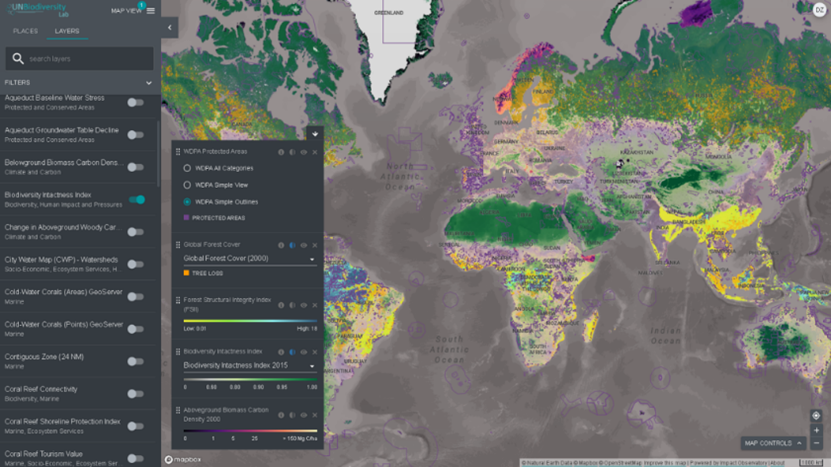
|
In addition to UN Biodiversity Lab, other key sources of global biodiversity data for understanding, mapping and taking actions to address the biodiversity crisis are highlighted below, including databases used to monitor and report on progress towards international environmental targets.
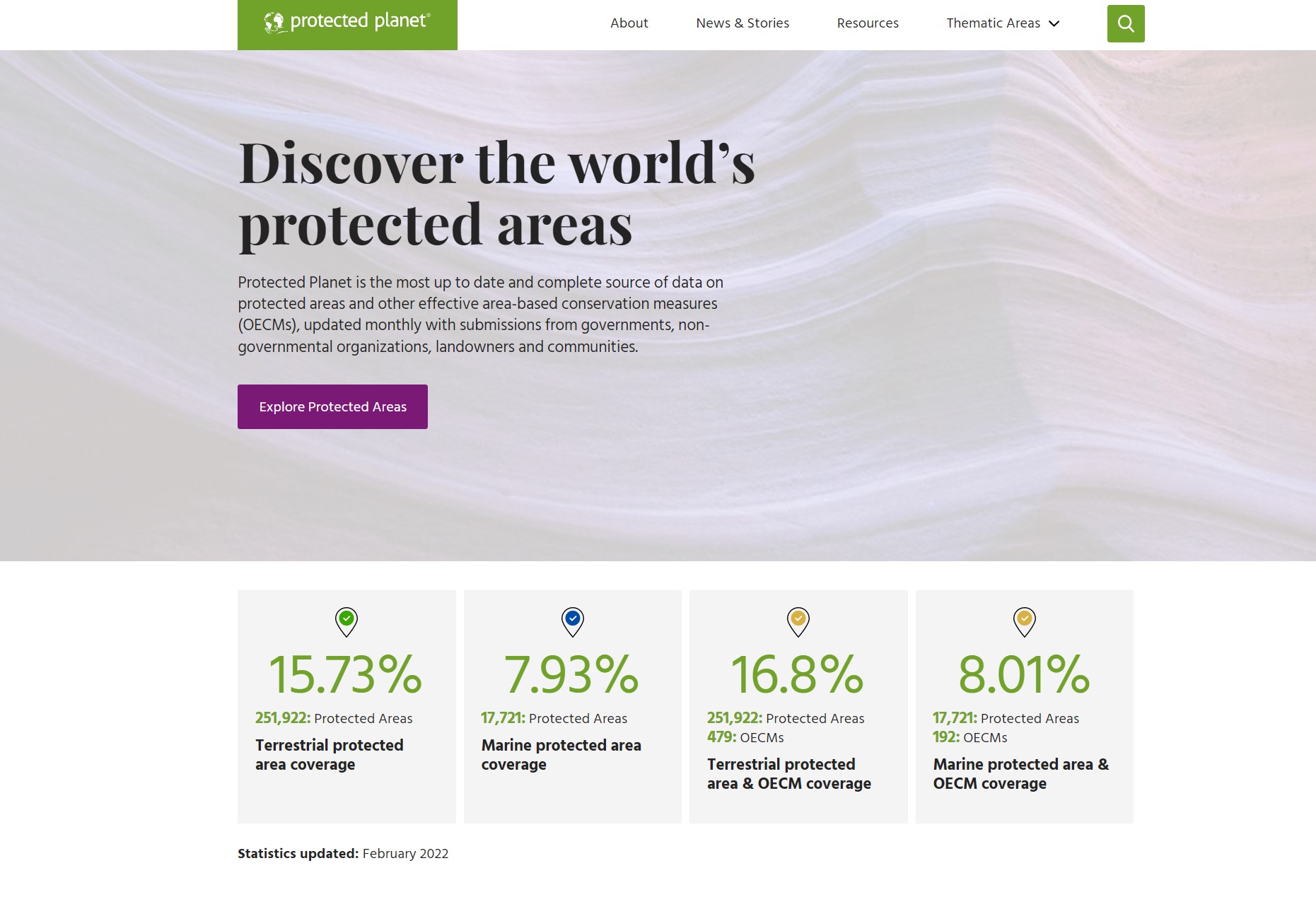
|

|
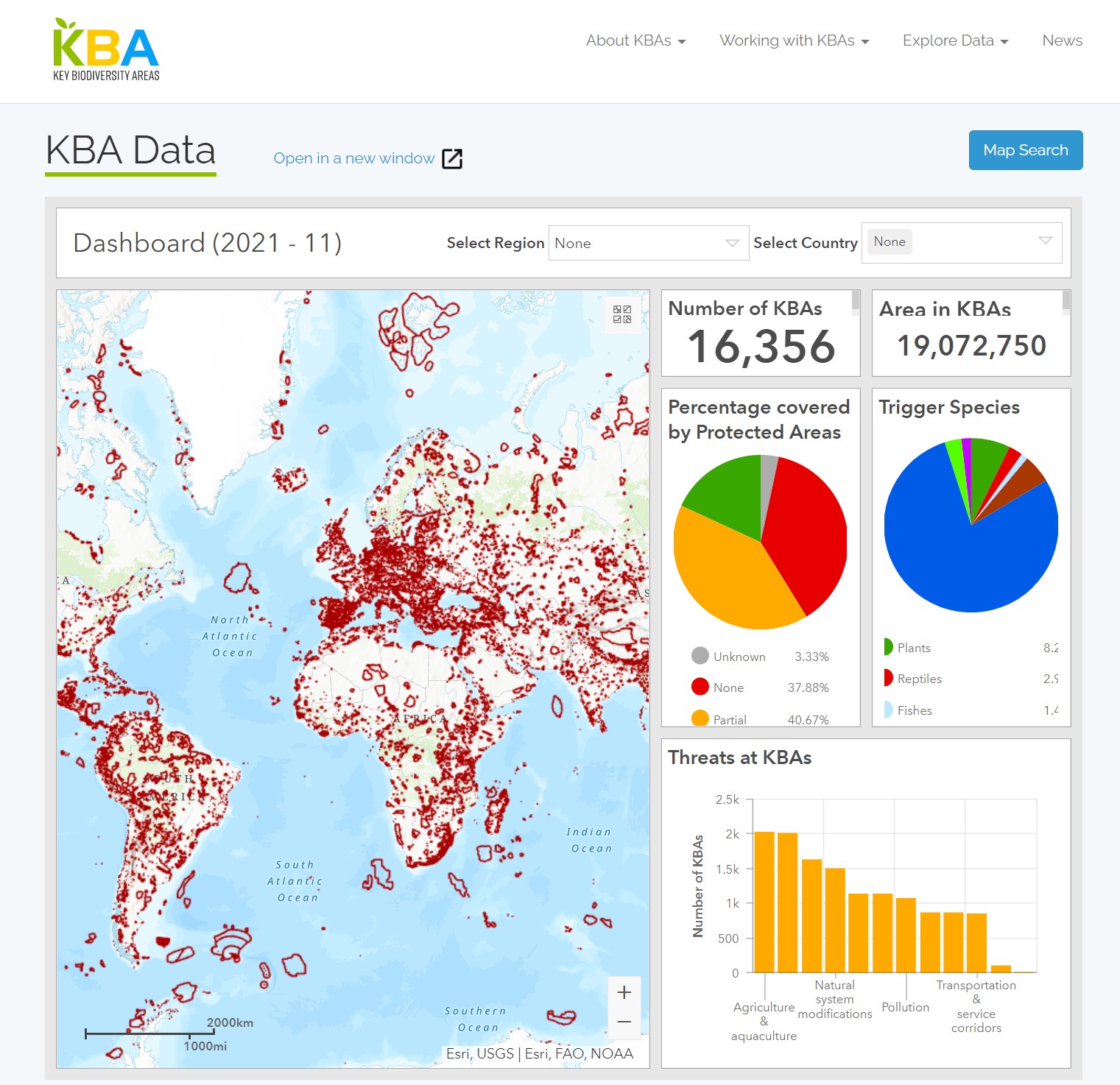
|
 |
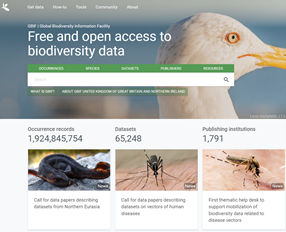
|
Below are further examples of resources used to track progress on the implementation of the biodiversity-related conventions.
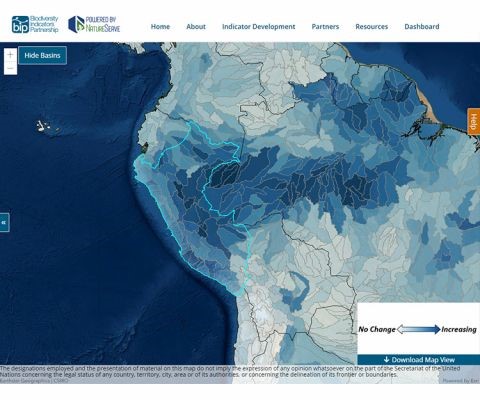
Biodiversity Indicators Partnership Dashboard (indicator and trends data) |

CITES Trade Database (wildlife species in trade)
|

Species+ (and CITES Checklist data and CITES-listed species and legal information) |

Online Reporting System (supporting national reporting cycle of selected MEAs) |
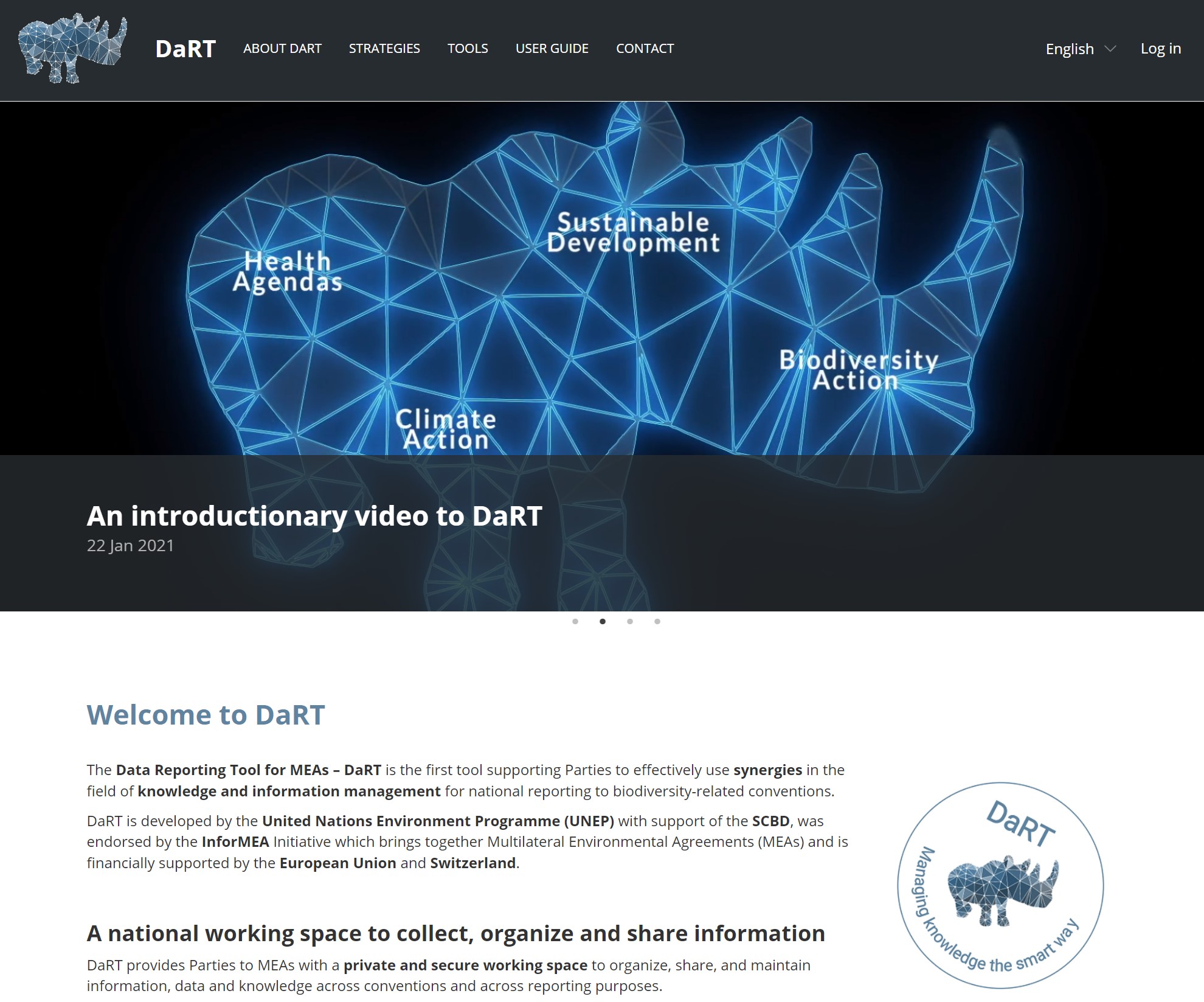
Data Reporting Tool for MEAs (DaRT) (for national parties to organise information across multiple MEAs) |
Businesses depend on or impact biodiversity, either directly through their activities or indirectly through their supply chains. In order to manage impacts and dependencies on biodiversity, and demonstrate improved performance, businesses and financial institutions need robust measurement approaches to understand and manage risks and leverage opportunities.
Pressure for corporate biodiversity disclosure is increasing, driven by investors, policymakers and civil society. Businesses and financial institutions are increasingly being called upon to demonstrate how they are positively contributing to biodiversity challenges and feeding into societal efforts to address them (e.g. the post-2020 global biodiversity framework, the Sustainable Development Goals and deforestation free supply chain commitments). Work is underway to create alignment on using approaches like the mitigation hierarchy to achieve no net loss or net gain performance objectives for biodiversity.
UNEP-WCMC and partners convene key stakeholders to improve clarity and build consensus on how businesses and financial institutions can measure and report on biodiversity performance, including through the use of the products outlined below.

|

|

|
| Integrated Biodiversity Assessment Tool (screening for areas of biodiversity importance) | ENCORE (financial risks and business dependencies associated with natural capital) | Aligning Biodiversity Measures for Business (screening for areas of biodiversity importance) |
- CBD Global Biodiversity Outlook
- IPBES Global Assessment
- WWF Living Planet Report
- FAO’s The State of the World’s Biodiversity for Food and Aquaculture
- UN World Ocean Assessment
- Ramsar’s Global Wetlands Outlook
- WEF Global Risks Report
- WEF Nature Risk Rising Report
- WEF The Future of Nature and Business Report
- Science-Based Targets for Nature: Initial Guidance for Business
Contact Us:info@unep-wcmc.org










